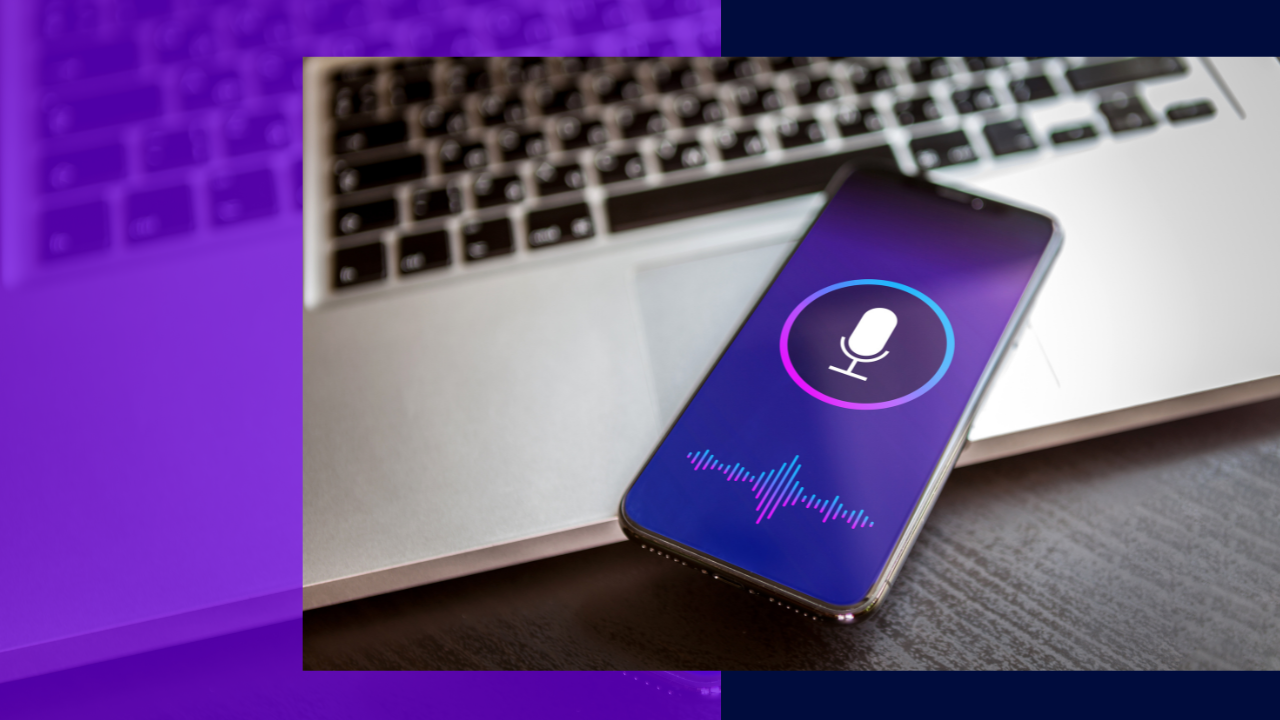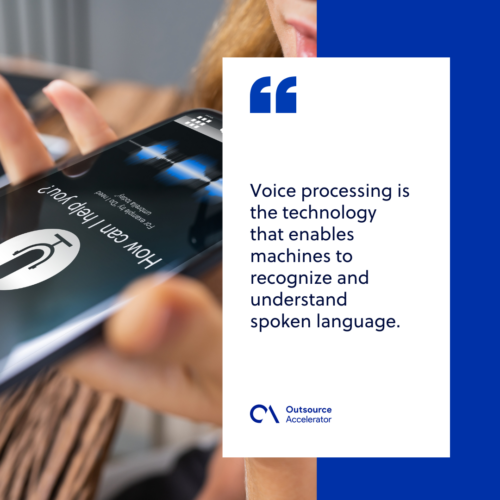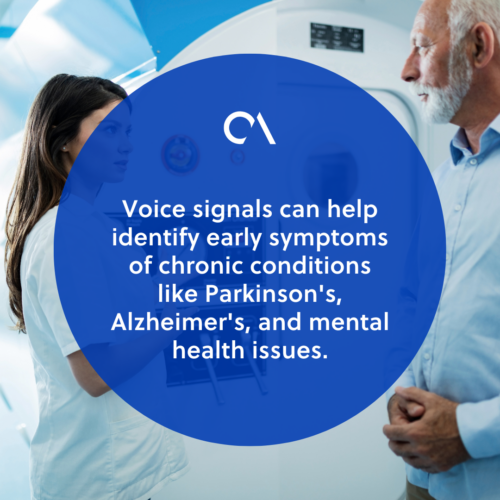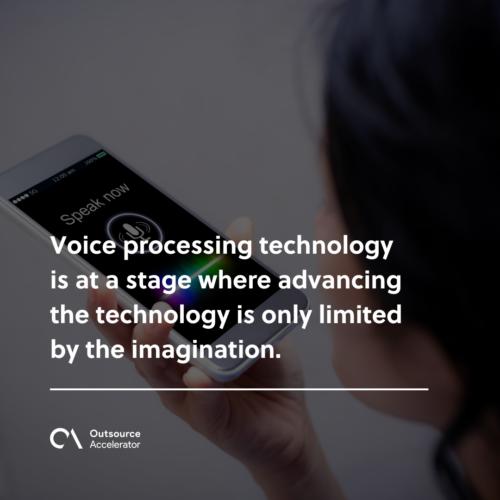Revolutionizing interactions through voice processing

Voice processing technology has long been a science fiction staple. It has been demonstrated in movies where characters spoke to computers, and the machines responded accordingly.
However, this technology has existed in the real world for quite some time. Only recently has voice processing technology taken center stage, and its potential has only begun to be realized.
Voice processing has become an increasingly common technology in many industries, from healthcare to retail. This has rapidly transformed how we interact with various devices with the rise of smartphone voice assistants.
This article will introduce the technology that drives voice processing and how it revolutionizes daily interactions.
What is voice processing?
Voice processing is the technology that enables machines to recognize and understand spoken language. It encompasses various mechanisms that store, replay, and analyze speech, from speech recognition to text-to-speech systems.
The voice processing technology has three main components:
- Microphone to capture the audio input
- Analog-to-digital converter to convert to a digital format
- Software to analyze and interpret the digital signal

Voice processing mechanisms
Different voice processing mechanisms are used to analyze the audio input signal. These can be categorized into:
Speech recognition
Speech recognition technology, or speech-to-text, converts spoken language into written text. It is primarily used in transcriptions, dictation software, and voice-enabled systems like virtual assistants.
One of the recent key advancements in speech recognition is recognizing words in context. This contextual speech recognition has improved transcription accuracy, benefiting many industries.
Speech synthesis
Speech synthesis, also known as text-to-speech, enables machines to convert written text into spoken language. It is used in applications that can respond with spoken language based on the user’s input.
Today, speech synthesis technology has advanced with the aid of automation. Advancements such as Google’s text-to-speech AI promise a higher quality of synthesized speech, simulating interactions with more lifelike responses.
Natural language processing
Natural language processing (NLP) technology enables machines to understand spoken language more deeply. It involves analyzing spoken language for meaning, context, and intent.
While NLP cannot directly process speech, it can function with voice recognition or text-to-speech technologies.
Applications of voice processing systems
Voice processing technology has numerous applications across various industries. Here are some of the key applications of voice processing technology:
Voice commands
Voice commands are the most recognizable application of voice processing technology. They allow users to handle their devices hands-free by issuing verbal commands.
Apple’s Siri and Amazon’s Alexa are the most famous examples of this technology.
Voice biometrics
Voice biometrics is a technique to verify individuals’ identities using their voices.
This application has been around for a while, most seen in customer support. In phone banking systems, for instance, IVR systems allow interaction with voice biometrics for an additional authentication layer for interactions.
Healthcare diagnostics
One voice processing application that recently gained much attention is healthcare diagnostics. Voice signals can help identify early symptoms of chronic conditions like Parkinson’s, Alzheimer’s, and mental health issues.
The potential for this technology to revolutionize healthcare is still in the early stages, but the potential is enormous.

Automatic interface
Automatic interface applies to many fields, including home automation, the automotive industry, and gaming systems. This technology allows us to interact with virtually every electronic device using our voice.
With an automatic interface, people have found it easier to set reminders, play music tracks, and control home security systems.
Challenges in applying voice processing technology
As with any emerging technology, there are also challenges in applying voice processing technology. Some of them include the following:
Accurate speech recognition
Accurate speech recognition is still an ongoing challenge, especially for software that can handle various accents and speech patterns.
Integration into existing systems
Integrating voice processing technology into their existing systems can be challenging for industries like healthcare, aviation, and fintech.
When applying voice processing technologies, certain compliances and regulations around data security and authentication must be considered. Patient information, for instance, is subject to protection under HIPAA.
Privacy
Voice processing technology raises questions about privacy and data protection in various applications. These concerns are most seen in the biometric and healthcare sectors, where private data is at stake.
Unforeseen biases
One of the less talked about challenges is the ability of voice processing technology to be impartial.
One study has shown that biases in gender, race, and other demographics are still evident in automatic speech recognition (ASR),[1] affecting accurate patient diagnoses.
Limited applications in some sectors
Applying voice processing technologies in some industries is impractical due to constraints like workforce limitations and lack of funding.
Implications of voice processing technology in the future
Voice processing technology is at a stage where advancing the technology is only limited by the imagination. Its integration into smart homes, offices, and automobiles will only become more pervasive in the following years.

A more extensive application of voice processing technology in the healthcare sector will revolutionize diagnosis and improve public health.
The future of voice processing technology is one of many possibilities, from personalized education based on voice recognition to voice-activated home security with intuitive technology that can understand when a call for help is made.
The dependence on keyboards and touchscreens will gradually fade away. Meanwhile, an entirely new way of interacting with machines will emerge.
Article reference:
[1] Automatic speech recognition (ASR). Feng, S., Kudina, O., Halpern, B.M. and Scharenborg, O. (2021). Quantifying Bias in Automatic Speech Recognition. arXiv:2103.15122 [cs, eess]. [online] Available at: https://arxiv.org/abs/2103.15122.







 Independent
Independent




